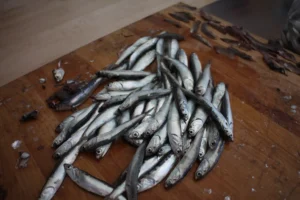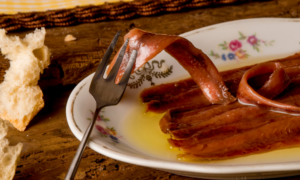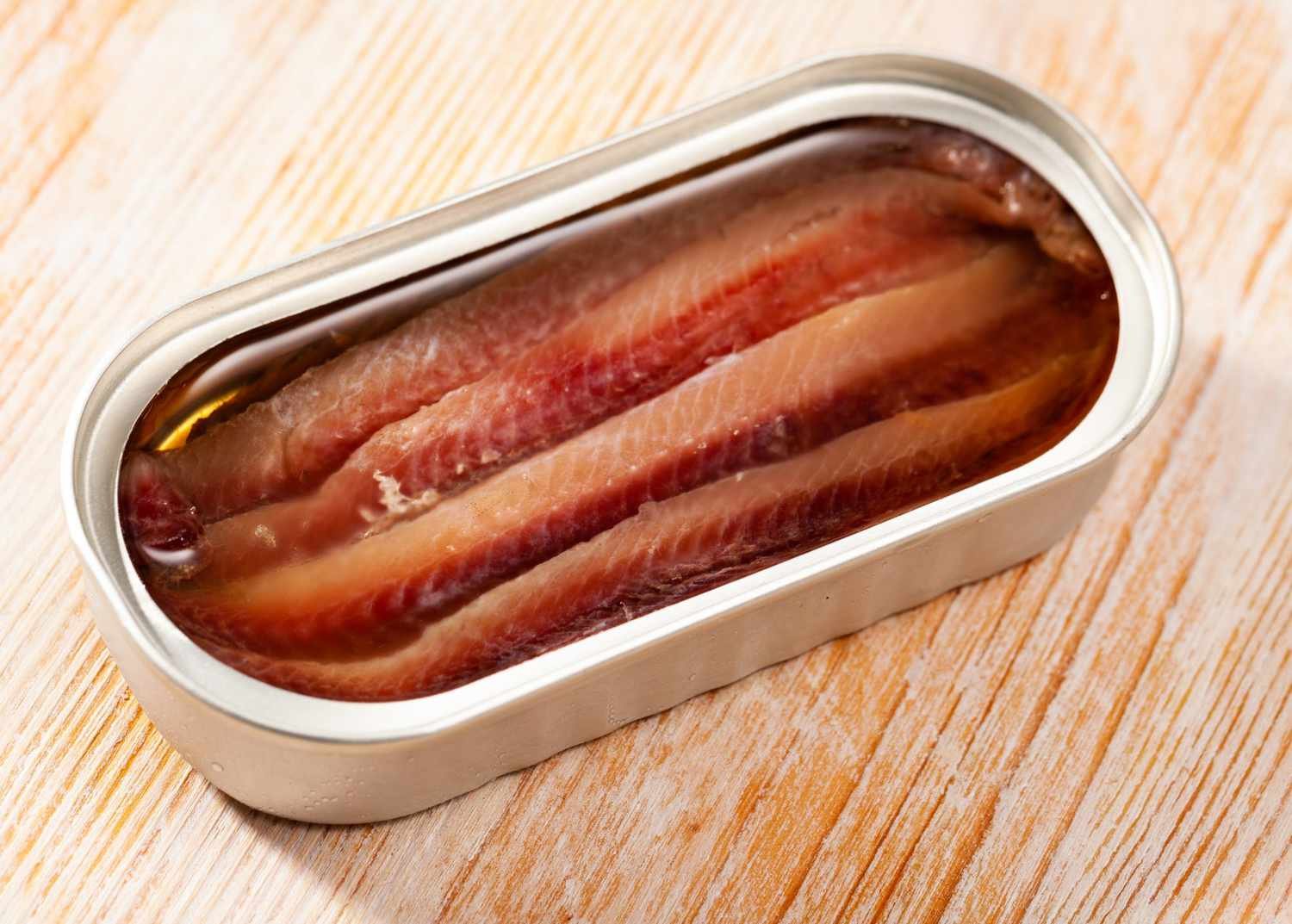Have you ever wondered how anchovies are typically preserved? These tiny fish, known for their strong taste, are loved around the world. But because they are so delicate, they need special care to stay fresh and tasty for a long time.
From old-fashioned methods like salting and brining to modern techniques like freezing and vacuum sealing, the ways how anchovies are typically preserved have evolved over time. In this blog post, we’ll explore these different methods and see why anchovies remain a favorite ingredient in kitchens everywhere.

Introduction to How Anchovies Are Typically Preserved
Anchovies are small fish with a big flavor, but to enjoy them all year round, they need to be preserved properly. How anchovies are typically preserved has changed over the years, but the goal is always the same: to keep them fresh, flavorful, and safe to eat.
Whether through salting, brining, or more modern techniques like freezing, there are many ways to preserve anchovies. This blog will take a closer look at the most common methods and explain how each one helps maintain the delicious taste of anchovies.
Traditional Salting Method: A Time-Tested Technique
One of the oldest ways to preserve how anchovies are typically preserved is by salting them. This method has been used for centuries and is still popular today because it’s simple and effective. To preserve how anchovies are typically preserved using this method, the fish are cleaned, layered in salt, and then stored in containers.
Salting not only keeps the anchovies from spoiling but also gives them a stronger flavor. The salt draws out moisture from the fish, which helps to prevent bacteria from growing. This method is most common in Mediterranean countries, where anchovies are often eaten as a salty snack or added to sauces.
By salting anchovies, their shelf life can be extended for months, allowing people to enjoy them long after they have been caught. This is a great way to keep the fish fresh without refrigeration, which is why it’s still widely used today.
Brining: Preserving Anchovies in Saltwater for Freshness
Brining is another popular method for how anchovies are typically preserved. In this process, the anchovies are placed in a solution of water and salt, known as brine. The saltwater helps to keep the fish fresh and prevents them from spoiling.
The brine not only preserves the how anchovies are typically preserved but also adds a rich flavor to them. Anchovies that have been brined are often used in cooking, especially in pasta dishes or on top of pizzas. They bring a salty, savory taste that enhances the overall flavor of the dish.
This method is especially popular in countries like Italy and Spain, where anchovies are a key ingredient in many traditional recipes. By keeping the fish submerged in brine, they can be stored for several months without losing their taste or texture.
Packing Anchovies in Oil: A Rich and Flavorful Preservation Technique
One of the tastiest ways to preserve how anchovies are typically preserved is by packing them in oil. Olive oil is often used for this purpose because it adds a smooth, rich flavor to the fish. To preserve anchovies this way, the fish are cleaned and then packed tightly into jars or cans filled with oil.
The oil acts as a barrier, keeping air out and preventing the fish from spoiling. It also helps to keep the anchovies moist and tender, making them perfect for spreading on bread or adding to salads. The flavor of the oil combines with the natural taste of the anchovies, creating a delicious and versatile ingredient.
Packing anchovies in oil is a method that is popular all over the world, particularly in countries where olive oil is a staple. It’s an easy way to preserve anchovies, and the result is a product that can last for months, staying fresh and flavorful.
Fermentation: The Southeast Asian Way to Preserve Anchovies
In many Southeast Asian countries, how anchovies are typically preserved is through fermentation. This method turns how anchovies are typically preserved into products like fish sauce, which is used as a key ingredient in many dishes. To ferment anchovies, the fish are mixed with salt and left to age for several months.
During fermentation, the fish break down, and their flavors become concentrated. The liquid that is produced, known as fish sauce, is packed with umami, a savory flavor that makes it perfect for adding depth to dishes. how anchovies are typically preserved preserved in this way are not usually eaten whole, but the sauce made from them is a staple in Asian cooking.
Fermentation is a natural way to preserve anchovies, and it has been used for generations. It’s an effective way to keep the fish from spoiling while also creating a product that adds a unique taste to food.

Freezing Anchovies: Modern Convenience with Minimal Processing
Freezing is one of the most modern ways to how anchovies are typically preserved. By freezing the fish at very low temperatures, their freshness and flavor can be maintained for a long time. This method is simple and doesn’t require any additional ingredients like salt or oil.
To freeze anchovies, they are cleaned and then packed in airtight bags or containers. This keeps them from getting freezer burn and losing their flavor. Frozen anchovies can last for months, making them a convenient option for people who want to keep anchovies on hand without worrying about them spoiling.
Freezing is also a great option for preserving anchovies because it doesn’t change the taste or texture of the fish too much. Once thawed, they can be used just like fresh anchovies in cooking.
Vacuum Sealing Anchovies: Sealing in Freshness for Longer Shelf Life
Vacuum sealing is another modern method for how anchovies are typically preserved. In this process, the air is removed from the packaging, creating a vacuum that helps to keep the fish fresh. Without air, bacteria and other organisms that cause spoilage cannot grow, so the fish stays good for much longer.
Vacuum-sealed anchovies can be stored for several months without refrigeration, making this a great option for long-term storage. The lack of air also helps to preserve the flavor of the anchovies, so they taste just as good when they are finally opened.
This method is becoming increasingly popular because it’s easy and doesn’t require any extra ingredients like salt or oil. It’s a clean and effective way to preserve anchovies, keeping them fresh for longer.
How Smoking Enhances the Taste and Shelf Life of Anchovies
Smoking how anchovies are typically preserveds is a method that not only preserves them but also adds a rich, smoky flavor. The process involves cleaning the fish and then hanging them over a fire or smoker, where they slowly dry out as they absorb the smoke.
The smoke acts as a natural preservative, keeping bacteria from growing on the fish. This method is popular in many coastal areas, where anchovies are often smoked and then packed for storage. The smoky flavor makes them a great addition to dishes like salads or pasta.
Smoked anchovies can last for several months if stored properly, and they offer a unique taste that is loved by many. This method of preservation is both practical and delicious.
Subheading (h3): How to Properly Store Smoked Anchovies
- Keep them in a cool, dry place
- Make sure they are tightly sealed
- Use within a few months for the best flavor
Using Preserved Anchovies in Cooking: Tips for Delicious Dishes
Once you know how anchovies are typically preserved, you can start using them in your cooking. Preserved anchovies are incredibly versatile and can add a burst of flavor to many dishes. Whether they are salted, brined, or packed in oil, they can be used in sauces, salads, or even on pizzas.
When using preserved anchovies, it’s important to rinse them first if they are too salty. This helps to balance the flavors and prevent the dish from becoming overpowering. Anchovies can be used whole, chopped, or mashed into a paste, depending on the recipe.
Preserved anchovies are a great way to add a rich, savory taste to your meals without much effort. With so many ways to preserve them, you can always have these tasty fish on hand.
Subheading (h3): Quick Tips for Cooking with Anchovies
- Rinse off excess salt before using
- Mash into a paste for sauces
- Add to pizzas or salads for a flavor boost

Conclusion
In conclusion, how anchovies are typically preserved involves several interesting methods, each with its own benefits. From traditional salting to modern freezing and vacuum sealing, these techniques help keep anchovies fresh and tasty for a long time. Understanding these methods can help you choose the best way to store your anchovies, whether you’re cooking them or just keeping them for later.
Whether you prefer the rich taste of smoked anchovies or the convenience of frozen ones, each preservation method has its own charm. By knowing how to preserve anchovies properly, you can enjoy their unique flavor anytime you want. So go ahead and try these methods to keep your anchovies fresh and delicious!
FAQs
Q: What is the best way to preserve anchovies for long-term storage?
A: Freezing or vacuum sealing are the best ways to preserve anchovies for a long time. Both methods keep the fish fresh and flavorful for months.
Q: How do you use salted anchovies in recipes?
A: Rinse salted anchovies to remove excess salt before using them in recipes. They can be added to sauces, pizzas, or salads for extra flavor.
Q: Can brined anchovies be used in cooking?
A: Yes, brined anchovies are great for cooking. They add a salty and savory flavor to dishes like pasta and dressings.
Q: How should smoked anchovies be stored?
A: Smoked anchovies should be kept in a cool, dry place in a tightly sealed container. They can last for several months if stored properly.
Q: What is the main benefit of preserving anchovies in oil?
A: Preserving anchovies in oil keeps them moist and tender, adding a rich flavor. The oil also helps to keep the fish fresh and extends its shelf life.









